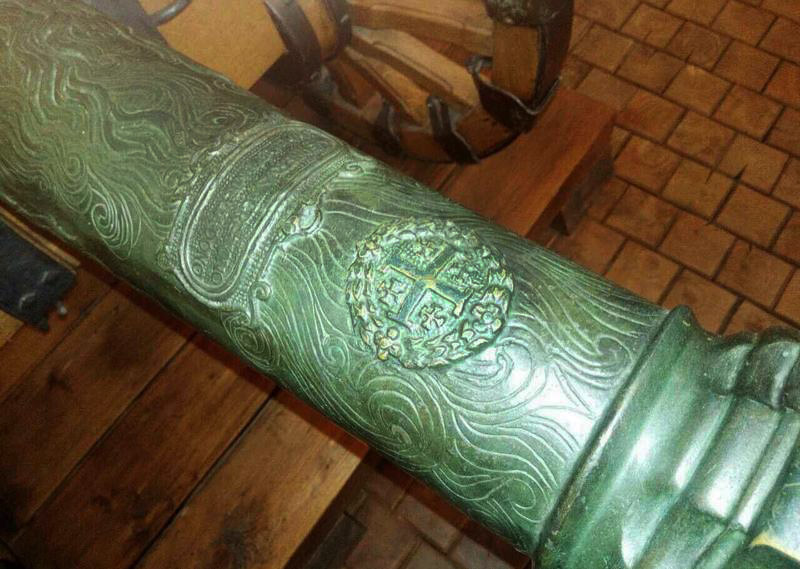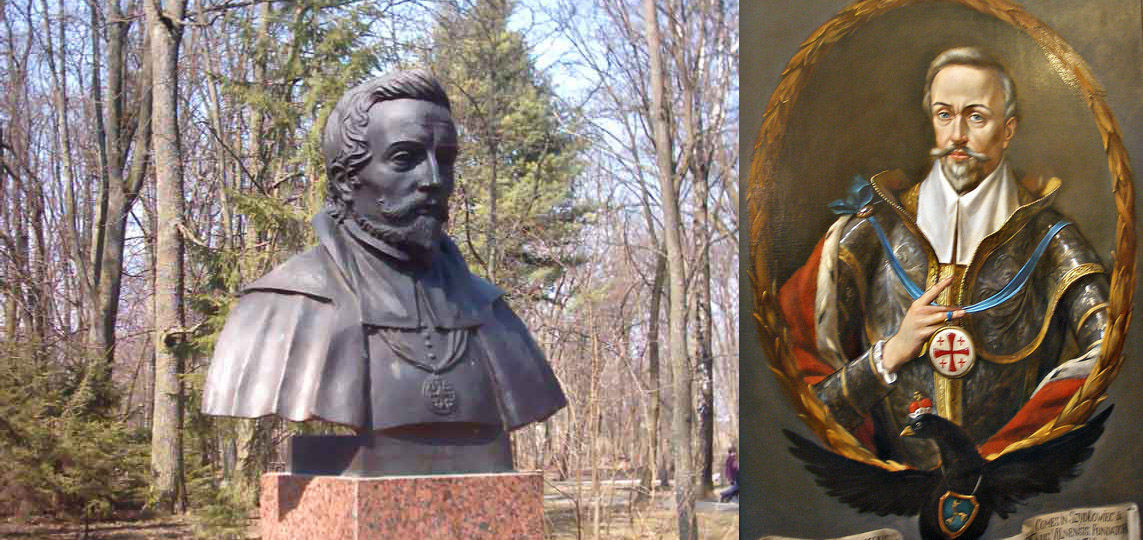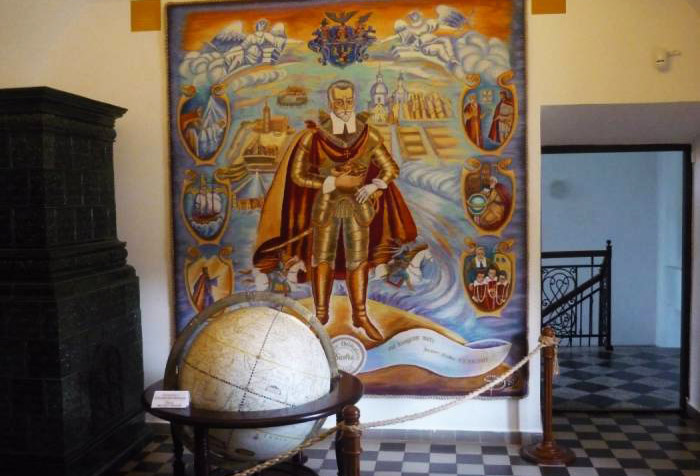Nikolai Christopher Radziwill (1549 – 1616), nicknamed “The Orphan”, is perhaps the most famous and popular member of the famous Belarusian family, from which dozens of prominent historical figures emerged.
King Sigismund August gave the nickname “The Orphan” to Nikolai Christopher. According to the legend, described in the family chronicle, one day the parents of a very young heir took him to a ball in the royal palace. There, during the feast, the king found a crying child in one of palace’s chambers, who was left unattended. Sigismund August caressed him and called him “a little, all forgotten orphan”. So the nickname became attached to the boy for the rest of his life. With it, he entered the history of his country.
Nicholas Christopher Radziwill received a brilliant education in the best universities in Europe. His spiritual mentor was the famous Jesuit Peter Skarga, who instilled in him progressive views for the time.

A unique engraving – a contemporary portrait of Nicholas Christopher Radziwill, The British Museum. (Source: britishmuseum.org)
According to the family tradition, after coming of age, the young man was actively engaged in politics. He took part in the election of the new Grand Duke of Lithuania (in Grand Duchy of Lithuania kings were elected), in 1579 he participated in the liberation of Polotsk from the troops of the Moscow Tsardom. After his victory, The Orphan received the post of Marshal of the Grand Duchy of Lithuania. In 1581, during the siege of Pskov, he received a severe head wound, after which he could no longer continue to participate in hostilities.
Having mended his health, The Orphan turned his energy to studying ancient manuscripts, after which he went to the Middle East. This dangerous journey along the northern coast of Africa took him two years. During that time he visited Jerusalem, Cyprus, Crete and Egypt.
Radziwill brought home the most precious cargo: animals for his home zoo in Nesvizh – leopards, mongooses, baboons, parrots; a collection of archaeological artefacts and many Asian recipes and secret knowledge. The most valuable was his diary entries – during the journey, the prince carefully recorded his impressions. He described the cities he visited, the customs of peoples, flora and fauna, Egyptian irrigated farming, incubation of chickens, etc.

The large red cross on the coat of arms of the Order of the Holy Sepulchre signifies Jesus Christ, the four small ones- his apostles.
It was after his return from the East that Radziwill set up the production of artillery guns in his castle. Visitors to Radziwill Castle in Nesvizh can still admire the elegant cannons, which in the 16th century were the crowning achievement of science and technology. More attentive visitors are sure to notice the symbol of five crosses decorating the guns. This symbol is undeniable proof that during his stay in the East Radziwill The Orphan was accepted into the Jerusalem Order of the Holy Sepulchre. From the defenders of the Holy Land, he received the recipe for gun-metal casting.

Cost of Arms of the Order on the cannons of the Nesvizh castle.
After returning to his native Nesvizh, The Orphan was mainly engaged in cultural projects. It was he who started building the majestic castle from stone, which is now the most visited tourist attraction in Belarus. In 1600 he opened a printing house in Nesvizh, one of the first in Europe. Having invited the famous cartographer Tomasz Makowski, he drew and printed the first map of the Grand Duchy of Lithuania.
In 1601, The Orphan published his travel notes detailing his travels to the Middle East. The book was called “The Long Journey” and made the author a European celebrity. It was translated into many European languages and republished over 20 times.

The glorious victory of the Crusaders in 1099 is described in detail in many chronicles.
Historians have quite different views on the time of the creation of Freemasonry. Opinions that the history of Freemasonry should start from the construction of the Temple of Solomon or from the death at the stake of Master of the Order of the Templar Jacques de Molay in 1314, are the most common, but not the only ones. Scottish Freemasonry historians mention with deep disdain the year 1717, from which the official English Freemasonry is counted, pointing to Edinburgh, where up until now works a Masonic lodge, which according to the existing documents has been renting its premises since 1699. They are polemicized by German historians, who found in the archives of European Masonic lodges meeting minutes of the early 17th century. All in all, serious researchers have at least fifteen possible sources and causes of the unique cultural phenomenon called “Freemasonry”. Medieval knightly orders – not only Templars – are among these potential sources.
The Jerusalem Order of the Holy Sepulchre, the Ioannites, The Hospitallers, as well as the Order of Malta, stand alongside the Templars as possible ancestors of Freemasonry.
The Knight’s Order of the Holy Sepulcher of Jerusalem was created by Knight Gottfried of Broth, who led the first crusade. After the conquest of Jerusalem he was proclaimed governor of the Kingdom of Jerusalem, but he refused to be crowned, preferring the title of Defender of the Holy Sepulchre.
After the end of hostilities in 1099, when it was time for the Crusaders to return home, Gottfried of Broth assembled a detachment that was to remain to defend the conquests. In 1113, the military monastic organization was officially recognized by the Pope.

The bust of Nicholas Christopher Radziwill is installed in Nesvizh, in the park adjacent to his family castle. The prince is dressed in ceremonial clothing with a medallion, testifying to his relationship with the Order.
The theory that the roots of Freemasonry, coming from the Crusaders and about Radziwill The Orphan, who brought Masonic ideas to Belarus, and more precisely, to the Grand Duchy of Lithuania, were laid out at a meeting with the brothers of the lodge “Oginsky”, who came to visit the Worshipful Master of another Belarusian Masonic lodge, working under the Rite of Memphis-Mitsraim. A professional historian, the Worshipful Master of the Belarusian Masonic lodge “Palace Of The Sun” №1 has been working on the history of Freemasonry in the Grand Duchy of Lithuania for many years. At the same time, he is also a practitioner, making a lot of efforts to revive Masonic traditions in the ancient Belarusian land.

A modern portrait of Radziwill Orphanage was presented to the museum of the Nesvizh Castle by the art workshops of Venice.
Other, direct and indirect signs of the existence of Freemasonry in the Grand Duchy of Lithuania at the time of Nicholas Christopher Radziwill were given in the report. In addition to the well-known symbol of the Order, a careful look can find other essential signs in the heritage of Radziwill. For example, the mosaic pavement, an indispensable attribute of a Masonic temple, is present in the Nesvizh palace, as well as in several significant portraits of him of the time.

The Order of the Holy Sepulchre still exists today. It has around 28,000 members. The Order has branches in almost all European countries, including Russia.
On some portraits, The Orphan stands in a specific Masonic posture, which also shows a lot to a specialist. But perhaps the most eloquent argument in support of this theory is the outstanding cultural and educational activities of Radziwill The Orphan, which has always been an essential part of the life of Masons. And this is the very tradition which the Belarusian Masonic lodges are trying to revive.

Members of the Belarusian lodge “Palace of the Sun” №1 in the Orient of Minsk are engaged in historical research of the country’s cultural heritage.
The members of Michal Kleofas Oginsky and The Palace of the Sun agreed to cooperate and even made an approximate plan of future joint activities. The heritage and traditions of their ancestors should not be forgotten.

